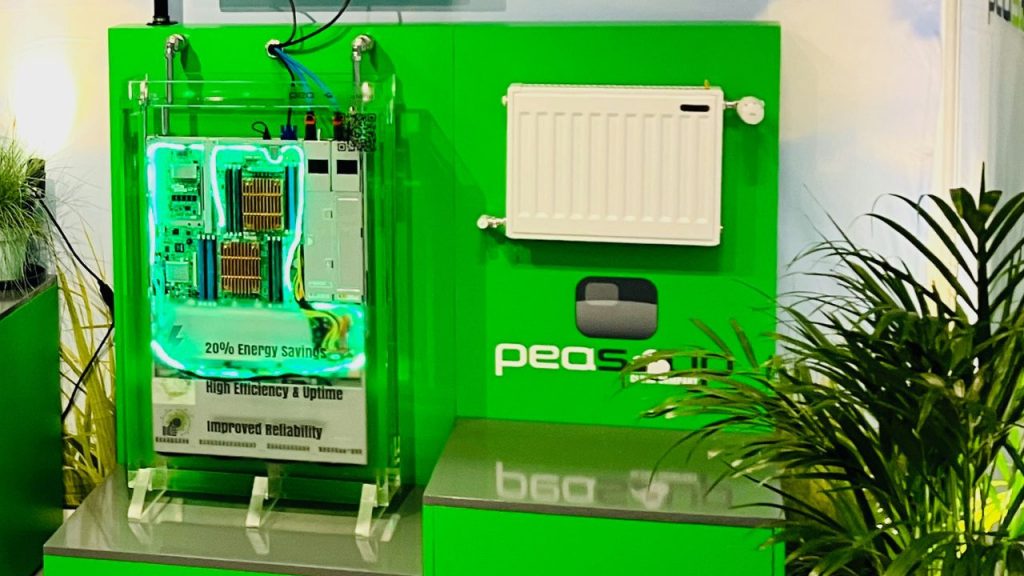Navigating the Future of Liquid Immersion Cooling in Data Centres
In the relentless pursuit of data storage and processing capabilities, conventional air-cooled data centres strain under mounting heat densities.
However, a transformative solution is emerging in the form of liquid immersion cooling, where IT equipment is submerged in a specially engineered dielectric fluid. Offering profound advantages in efficiency, scalability, and sustainability, this technology is poised to redefine the landscape of data centre operations. Let’s embark on a journey into the future of liquid immersion cooling and explore the potential advancements that will shape tomorrow’s data centres.
Advancing Cooling Efficiency – Redefining Heat Transfer Dynamics
Liquid immersion cooling excels in heat transfer efficiency, leveraging liquids’ superior thermal conductivity to directly extract heat from processors, thereby enhancing temperature control and reducing energy consumption.
Future advancements in this domain include:
- Nanoparticle-infused fluids: Ongoing research seeks to develop coolants enhanced with nanoparticles, aiming to further elevate thermal conductivity. This innovation promises reduced power requirements for pumps and cooling systems.
- Bio-based dielectric fluids: Traditional coolants, often reliant on synthetic chemicals, raise environmental concerns. Exploring bio-derived alternatives that are readily biodegradable will promote sustainability without compromising performance.
- Two-phase immersion cooling: This technique harnesses the phase change of the coolant (liquid to vapour and back), offering even more efficient heat removal. Advancements in managing the boiling process and ensuring equipment safety could unlock substantial efficiency gains.
Scalability Solutions – Pioneering Large-Scale Deployment
Traditionally perceived as more suitable for smaller deployments, liquid immersion cooling is now poised for large-scale adoption, facilitated by:
- Modular immersion tanks: Standardised, pre-fabricated tanks with integrated cooling systems could enable easy deployment and scalability based on data centre requirements, simplifying installation and maintenance.
- Rack-level immersion: Future designs might focus on immersing individual server racks, providing granular cooling control and seamless integration with existing data centre infrastructure.
- AI-powered optimisation: Artificial intelligence implementation could enable real-time monitoring and optimisation of cooling systems, ensuring efficient resource utilisation and preventing overcooling, thereby enhancing scalability.
Sustainable Synergy – Harmonising with Renewable Energy Sources
With sustainability at the forefront of concerns, liquid immersion cooling’s reduced energy consumption already makes a significant contribution.
Future advancements aim to fortify this connection through:
- Waste heat recovery: Extracted heat from the coolant can serve secondary purposes like space heating or hot water generation, enhancing overall energy efficiency within the data centre.
- Direct integration with renewables: Co-location of data centres with renewable energy sources like geothermal or solar enables direct use of clean energy to power cooling systems, fostering a truly sustainable data centre model.
- Biodegradable coolants and responsible disposal: Research into bio-based coolants, coupled with responsible disposal and recycling practices, ensures the overall sustainability of the immersion cooling process.
Looking Beyond
The future of liquid immersion cooling extends beyond technical advancements, necessitating:
- Standardisation – Industry-wide standards for coolants, equipment design, and safety protocols are essential for broader adoption.
- Cost analysis – While immersion cooling offers long-term energy savings, upfront costs may be higher than traditional air cooling. A comprehensive cost-benefit analysis accounting for the entire system lifecycle is imperative.
- Environmental impact assessment – A thorough life-cycle assessment, including the environmental impact of coolant production and disposal, is critical for responsible implementation.
A Refreshingly Cool Future for Data Centres
Liquid immersion cooling heralds a future where data centres operate with heightened efficiency, scalability, and sustainability. Through advancements in heat transfer, modularity, and renewable energy integration, this technology holds the potential to revolutionise data centre operations, steering towards a greener digital landscape. As research and development progress, the horizon of data centre cooling shines with promise.

